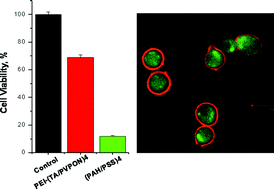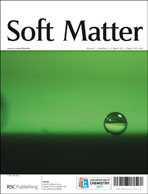Hydrogen-bonded LbL shells for living cell surface engineering
Abstract
We report on the design of cytocompatible synthetic shells from highly permeable, hydrogen-bonded multilayers for cell surface engineering with preservation of long-term cell functioning. In contrast to traditional polyelectrolyte layer-by-layer (


 Please wait while we load your content...
Please wait while we load your content...